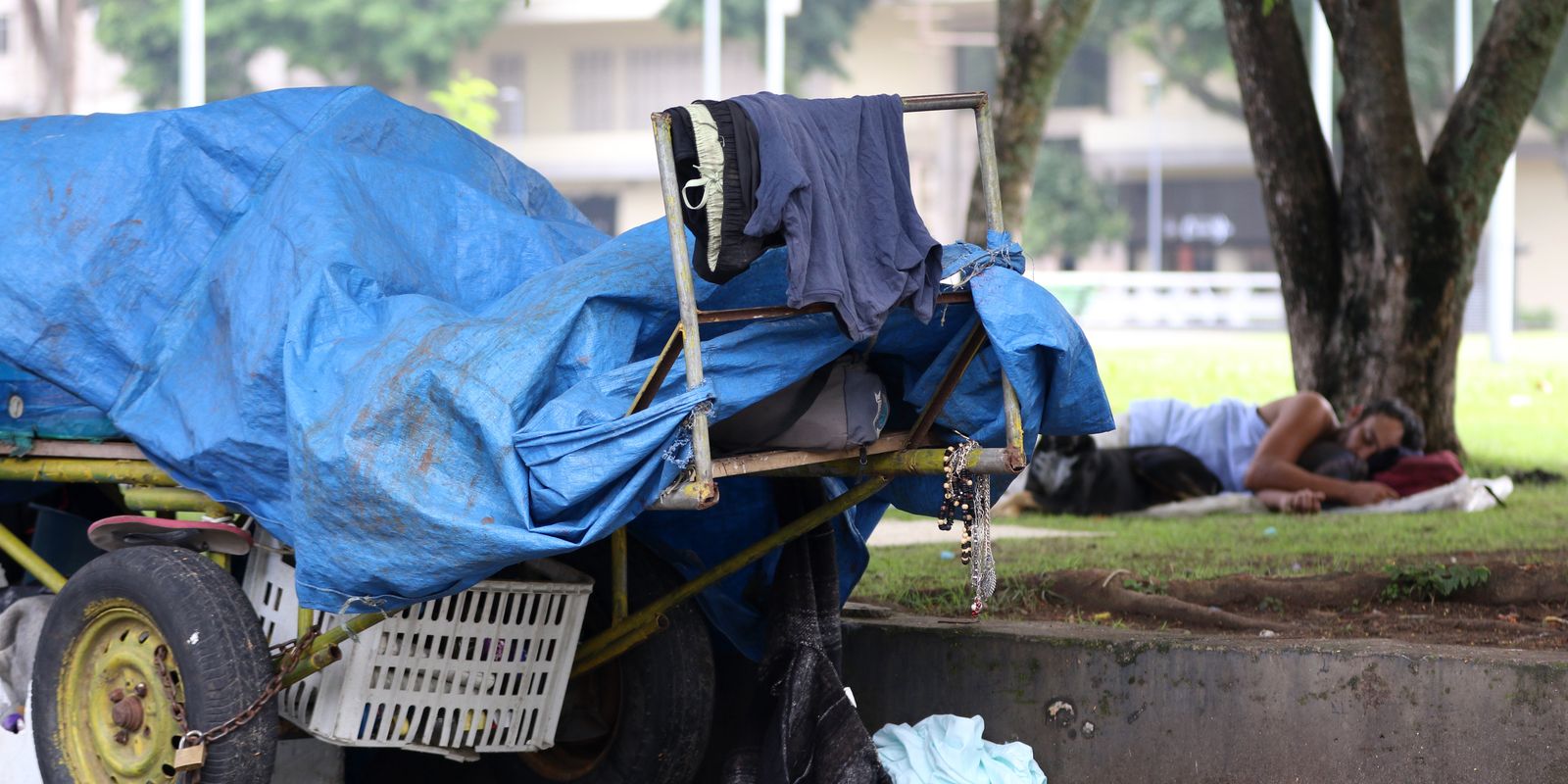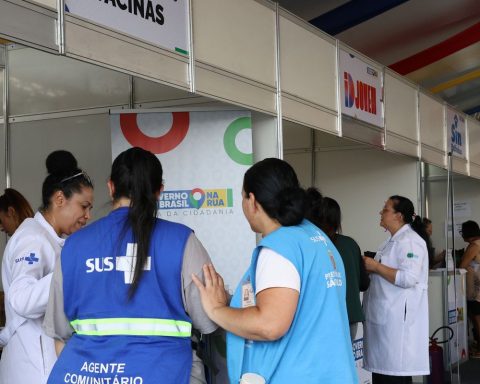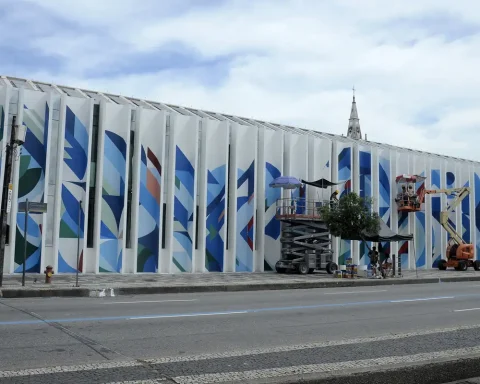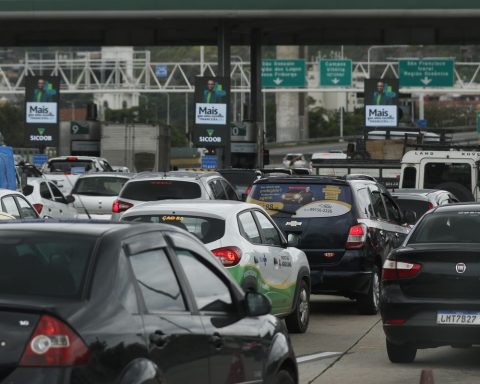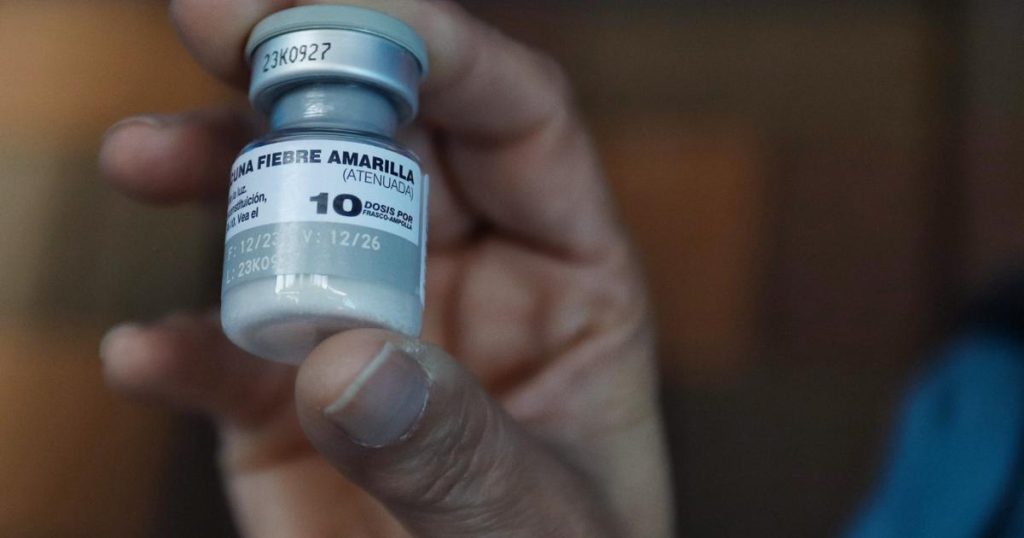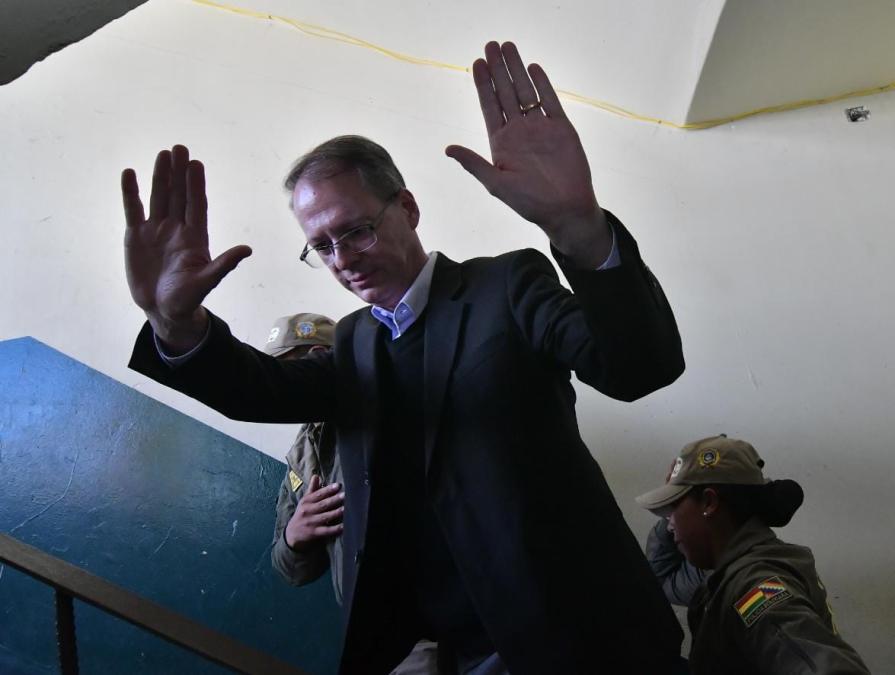The number of people living in homelessness throughout Brazil registered in the Federal Government’s Single Registry for Social Programs (CadÚnico) in March this year reached 335,151. Compared to that registered in December 2024, when there were 327,925 people in this situation, there was a 0.37% increase in the first quarter of this year.
The data are from the April Technical Report of the Brazilian Observatory of Public Policy with the homeless population of the Federal University of Minas Gerais (Obpoprua/Poles of the Federal University of Minas Gerais – UFMG), released on Monday (14). The study was done based on Data provided by the Ministry of Development and Social Assistance, Family and Hunger Fighting (MDS) About the cadunic.
The number found in March is 14.6 times higher than that recorded in December 2013, when there were 22,900 people living on the streets in the country.
THE Brazil agencythe Ministry of Development and Social Assistance, Family and Hunger Fighting said that in 2023 resumed the training for interviewers and operators of the Single Registry, strengthening the performance of the municipalities in the data collection. The folder also highlighted the underground and inconsistency of the previous data, due to the weakening of the registration update in the previous management (2019-2022).
In Brazil, the report demonstrates that CadÚnico registered in March 2025:
- 9,933 homeless children and adolescents (3%);
- 294,467 homeless people from 18 to 59 years old (88%);
- 30,751 homeless people (9%);
- 84% are male people.
Regarding income, 81% (272,069) of homeless people survive with up to R $ 109 per month, corresponding to 7.18% of the minimum wage, today R $ 1,518.
More than half (52%) of homeless people in the country have not finished elementary school or have no instruction, most are black people. This percentage is more than double the total of the Brazilian population that did not complete basic education or in a condition of illiteracy24%, according to the 2022 census of the Brazilian Institute of Geography and Statistics (IBGE).
Low education makes people access to job opportunities generated in cities, suggests research.
Where they live
The Southeast region concentrates 63% of the country’s homeless population, equivalent to 208,791 people. Then it is the Northeast Region, where 48,374 people (14%) are homeless. In the southern region, there are 42,367 (13%), in the Midwest, 19,037 (6%), and in the Northern Region, 16,582 (4%) individuals are in this condition of social vulnerability.
The analysis reveals that four out of ten people living on the street in Brazil are in the state of São Paulo (42.82% of the total of the homeless population). The second state is Rio de Janeiro with 30,997 homeless people or 10%, succeeded by Minas Gerais, with 30,355 people.
In absolute numbers, the five capitals with the largest homeless populations are:
- Sao Paulo, with 96,220 people;
- Rio de Janeiro, 21,764;
- Belo Horizonte, 14,454;
- Fortaleza, 10,045;
- Salvador, 10.025;
- and Brasilia, 8,591.
Regarding the historical series, 12 federation units presented in their capitals increase in the record of homeless people:
- Rio de Janeiro
- Federal district
- Santa Catarina
- Pernambuco
- Rondônia
- Roraima
- To
- Amapá
- Piauí
- Paraíba
- Mato Grosso
- and Mato Grosso do Sul.
Nine states recorded a decrease in the concentration of homeless people records in CadÚnico in their capitals:
- Minas Gerais
- Rio Grande do Sul
- Paraná
- Acre
- Maranhão
- Goiás
- Alagoas
- Sergipe
- and Holy Spirit.
The states that remained stable are:
- São Paulo
- Bahia
- Ceará
- Amazonas
- Rio Grande do Norte
- and Tocantins.
If considered the proportion for a thousand inhabitants, the most recent survey points out that the municipality of Boa Vista has 20 homeless people for 1,000 inhabitants. In the city of São Paulo, every 1,000 people, eight are homeless. In Florianópolis, every 1,000 people, seven are homeless, and in Belo Horizonte, there are six out of 1,000 people.
Violence
From 2020 to 2024, 46,865 acts of violence against the homeless population were registered Dial 100coordinated by the Ministry of Human Rights and Citizenship (MDHC).
Brazilian capitals are responsible for 50% of occurrences, especially São Paulowith 8,767 cases of registered violence; Rio de Janeiro, 3,478; Brasilia, 1,712; Belo Horizonte, 1,283; and Manaus, with 1,115 occurrences.
Most homeless people who have suffered some kind of violence are between 40 and 44 years oldwhich represents 5,697 violated people.
Violence against the homeless population occurred, especially on public roads, with more than 20.5 thousand occurrences.
The report also draws attention for the high number of complaints in spaces that should protect the homeless populationsuch as sheltering services, health facilities, reference centers, long -term institutions for the elderly and public agencies.
Conclusions
By note, the Obpoprua/Poles-UFMG stated that the scenario is worrying and emphasizes that structuring public policies such as housing, work and education aimed at the homeless population in Brazil are nonexistent or inefficient.
“Failure to comply with the Federal Constitution of 1988 with homeless people continues in Brazil, with very few advances in guaranteeing the rights of this population.”
MDS has stated that it has invested “continuously in strengthening the welcome and protection of adults and families in a situation of vulnerability, contributing to social inclusion and the confrontation of inequalities.”
The Ministry listed the federal government’s actions in this theme and detailed that Union resources are used to strengthen specialized reference centers for homeless population (POP Center). These places offer services such as meals, personal hygiene spaces, support in document issuance and other essential activities.
According to MDS, there is also the cost of operation of the specialized service to families and individuals (PAEFI), aimed at supporting families and people at social risk or who had rights violated. The service is offered, necessarily, in a Specialized Reference Center for Social Assistance (CREAS).
